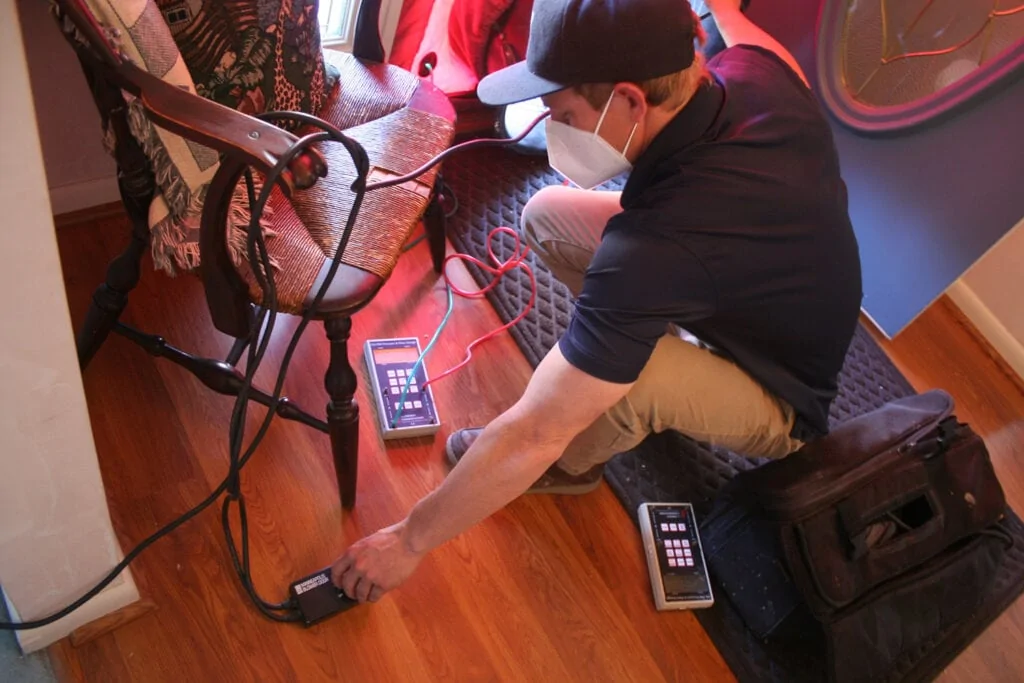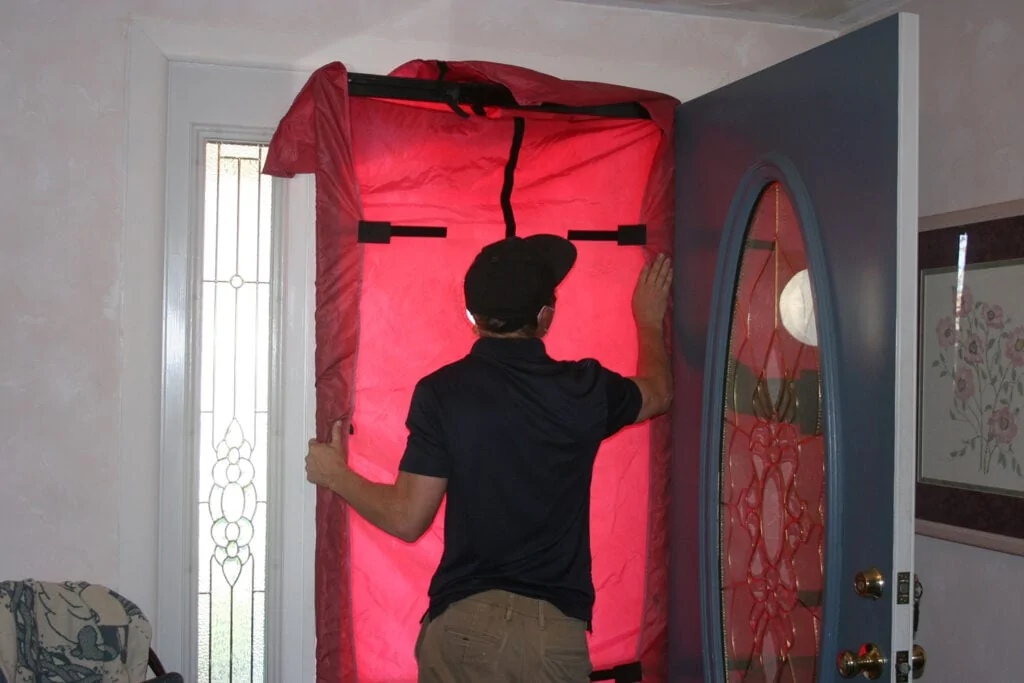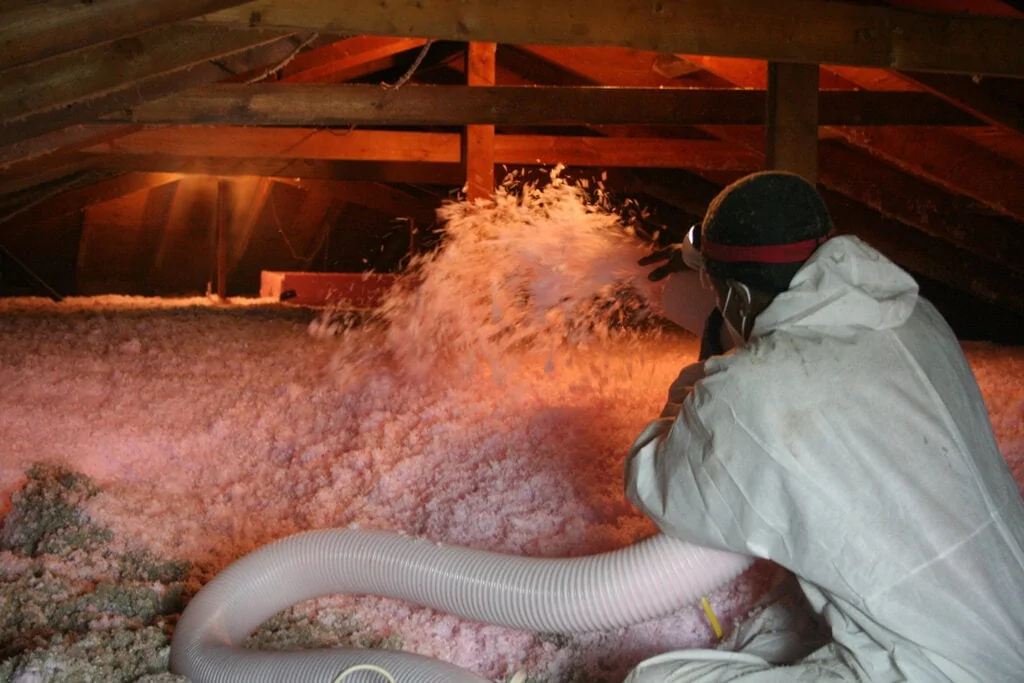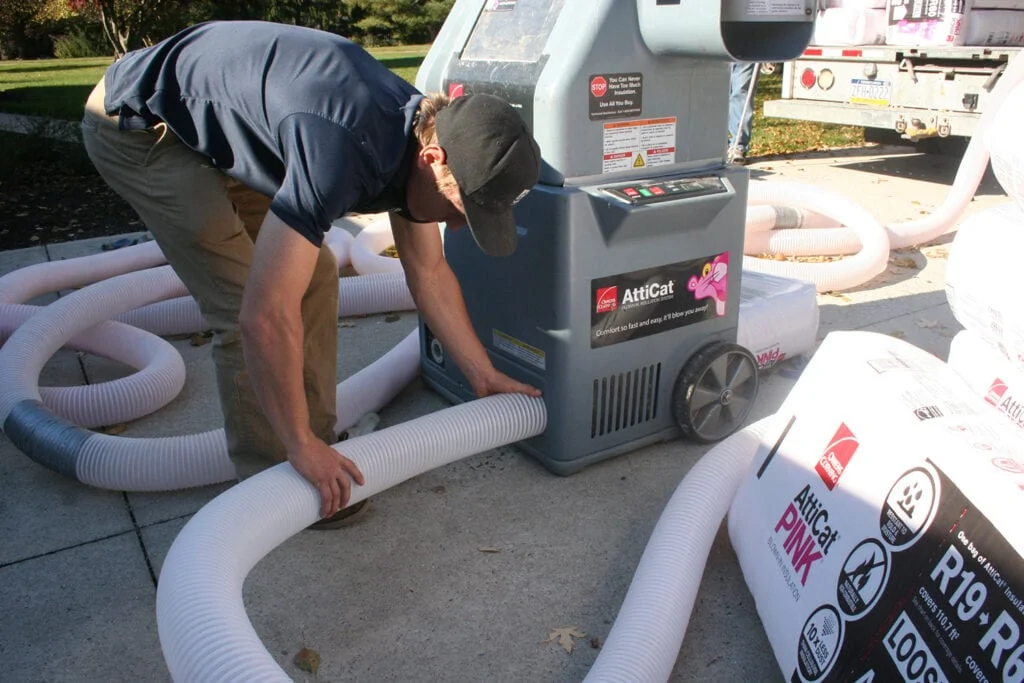York Home Performance Partners with Utility Energy Programs to Make Homes Energy Efficient with Modern Insulation Solutions
York Home Performance (YHP), a weatherization and insulation provider based in York, PA, is driven by marketing and the technical expertise to make homes more energy efficient. When business partners Noah Glatfelter and Bob Silverman graduated from Pennsylvania State University, they started a successful painting business using active market research to reach customers. It led them to their dream of starting a company that performs energy audits and remediation through private and federal utility programs.
YHP partners with Baltimore Gas & Electric (BGE HPwES), PEPCO, Empower Maryland and FirstEnergy Utilities to perform contracting work that qualifies for Home Performance ENERGY STAR® programs and subsidized rebates.
“We find that up to 90% of homes in the Southern PA, North Central MD region are under insulated— often exterior walls have as little as a single inch of insulation that results in extreme energy loss and high monthly utility bills,” said Glatfelter. “Our measurement methods and insulation solutions can make a huge difference. And, with these energy programs, we can save customers up to 75% off their insulation material costs through their utility company,” said Glatfelter. “Most consumers get rebates, with affordable housing 100% covered.”

“As certified Building Performance Institute (BPI) contractors, we are able perform to energy audits, analyze what energy efficiency improvements make sense and complete the necessary upgrades,” explained Glatfelter.
In the beginning, Glatfelter, Silverman and their team literally walked the streets to reach homeowners door-to-door. “Now we’ve built a team of trained certified energy professionals. All of our home energy auditors and workers have completed rigorous national certifications and state training to ensure the highest professional standards,” said Glatfelter. Today, YHP has 30 employees performing energy audits to diagnose problems and then mitigating with the proper insulation, mainly batt and blown-in fiberglass.
“We have four crews going at once to weatherize and insulate homes – they move around between different stages of jobs so there are a lot of moving parts,” he said. “We insulate 20 homes a week, 100 homes month, and up to 1,200 a year!”
YHP’s business is a mix of residential, multi-family and a surprising number of trailer homes. “On a given day, we might have 80 apartment building units where we insulate the top floor; and the next day, a trailer weatherization through the regional utility,” said Glatfelter. Supplied mainly by Lowes, the most common jobs include residential measuring and mitigation –starting with sealing and insulating exposed band joist with R19 batt to prevent air leakage. The band joist and sill plate are the set of boards in wood frame houses that sit on top of the foundation wall and run in a band around the house; as the barrier to the outdoor elements, they should be sealed and insulated.
“We do 40 – 50 energy audits a week for homes from State College, PA to DC and Maryland,” said Glatfelter. “We pride ourselves on our diagnostics and quality materials.” For YHP, the size and type of job can really vary. “This week alone we have four projects going on from trailers to multi-million dollar homes. We insulate a lot of trailers that people have lived in for years not originally meant to be year-round homes, so they are hollow and need to be insulated from top to bottom.”
With batt insulation, YHP is looking to impress the homeowners and home inspectors with insulation that enables clean cuts and smooth surfaces. “We don’t want raggedy edges or a ropey look, especially where the insulation is exposed in a utility area. We use Owens Corning Eco Touch 65 or 77 that has the R-Values we need and a nice appearance. We’ve also seen their new PINK Next™ Gen Fiberglas™ material coming to home centers soon –that uses a new fiber technology that’s even smoother and softer.”
“Owens Corning is very tuned in to safety, so we use whatever safety gear is recommended, but we know Eco Touch is a safe material with no formaldehyde, fire retardants or harsh chemicals. We are excited about the advancements and ease of installation of fiberglass batt products.”
Education is a big part of YHP’s business. “We often educate homeowners on the safer ingredients in fiberglass. For example, a suburban mom might not want exposed fiberglass in her basement until we assure her that it’s safe, doesn’t have bad chemicals and is durable.” Glatfelter said they use a minimal amount of foam. “The only foam we might use is a froth pack ready to go to fill in gaps, then we lay the batt over it.”
In addition, YHP serves some massive $2 and $3 million homes where exterior walls can be blown with fiberglass to meet the optimum R-value. “When we’ve mapped out the areas in the walls that need fortifying, we are able to upgrade the wall insulation without being invasive,” he said. “We’ve really perfected our stud wall insulation installation techniques over the years to provide the maximum R-factor, or thermal resistance, with minimal disruption,” he explained.
Many homes in York, PA were built pre-building code before 1950, with lots of variability of construction, airflow and nooks and crannies. “A lot of the attics are like Swiss cheese,” said Glatfelter. “And for the homeowner, the attic is out of sight, out of mind.”
“Over many years, cellulose insulation compresses, deteriorates, gets dusty and isn’t great for managing moisture, whereas blown-in fiberglass is a safe bet, better R-value and far better for moisture management,” he said. Glatfelter said the blown-in fiberglass cuts on time, especially with Owens Corning’s Atticat loose-fill fiberglass and blown-in machines.
For a recent attic job in a pre-1950s ranch, YHP used an AttiCat Blowing machine using 20+ bags for a 2,000 sq. ft. attic, adding 14 inches of AttiCat® PINK® blown-in fiberglass on top of six inches of cellulose – increasing the R-value to about R-44. The most time consuming and messiest part of the job was the sealing and prep. They had to dig under the old cellulose insulation to seal leaks and recessed lights across the attic plane, in problem areas located during the blower door test.
The crew likes the mobility of the AttiCat blower, which they say is great for getting closer to houses with limited driveway space and parking. The AttiCat blower is loaded out of the truck, followed by the hose and placed in the driveway, while bags of loose-in Insulation is stacked nearby, with half-bags inserted into the blower as needed. It takes a bit of finesse with the hose to adjust the flow, so it completely and evenly covers the attic plane with the correct amount of loose-fill fiberglass.
Although materials have been readily available at Lowes, labor has always been a concern as in the rest of the industry, in order to maintain multiple crews. “We do have good worker retention overall, but there’s always some turnover. Since we do everything related to energy home improvement – insulation, water heaters and HVAC- it’s that much more important to have product innovation and time savers. To flatten the learning curve for our new workers, we look for insulation products that are easy to install therefore saving time and labor.”
“Our end goal is comfort for the homeowner using our home energy equipment to pinpoint the underlying causes of the home’s symptoms—then solving the problems with the best, safest materials for the job. We can determine which improvements will deliver the most comfort for the money—providing a combination of solutions from insulation to HVAC,” said Glatfelter.
To learn more about York Home Performance visit www.yorkhomeperformance.com or for more information about Owens Corning’s insulation products, visit www.owenscorning.com








